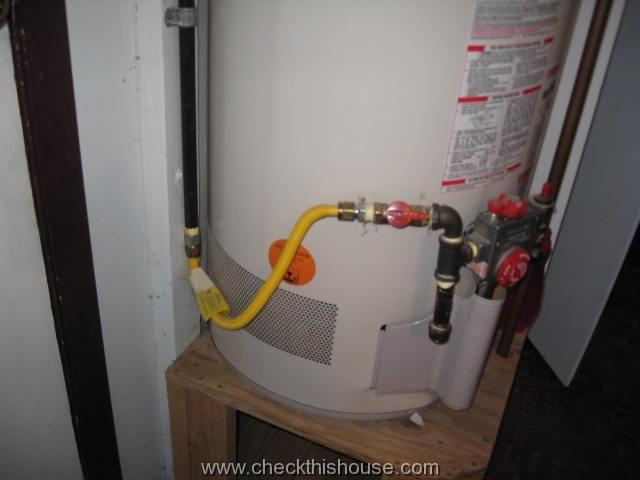I'm planning to replace my 12-year old natural gas 40 gallon hot water heater (see attached photos) with a new Whirlpool nat gas 50 gallon tank. I've replaced an electric hot water tank before, but never done much with gas. Given that, plus the fact that my home is almost 90 years old, I have a few questions, hoping someone can help.
1. In the 4th photo (IMG3862) you can see the shutoff on my black iron pipe natural gas line running to the water heater. It looks to me like an old water line shutoff rather than the nice new gas 1/4 turn shutoffs. Should I mess with replacing it? I am a little worried about trusting it to actually "shut off" while I'm working on the line below connecting to the tank.
2. In the 5th photo (IMG3863) it shows where the "L" of the above mentioned black iron gas line comes down (full view in IMG3859). This is maybe the most curious part for me. Is the new tank going to have the nat gas hookup in almost the exact same spot as this tank? Or will I be having to make significant adjustments messing with the height and length of the black iron gas line trying to get it to line up with my new tank's hookup? Is a nat gas flex line hookup acceptable to use (I've seen them on stove/oven hookups, but never a water heater).
3. For the water connections on top of the tank (IMG3860), should I stick with the copper lines or can I replace those with flex lines? Obviously I would need to install a new shutoff as well.
I greatly appreciate input anyone can provide on any of those points. I'd really like to save some $$ and tackle this myself, but I don't want be taking risks with my home by improperly connecting new gas lines.
Thanks!!





1. In the 4th photo (IMG3862) you can see the shutoff on my black iron pipe natural gas line running to the water heater. It looks to me like an old water line shutoff rather than the nice new gas 1/4 turn shutoffs. Should I mess with replacing it? I am a little worried about trusting it to actually "shut off" while I'm working on the line below connecting to the tank.
2. In the 5th photo (IMG3863) it shows where the "L" of the above mentioned black iron gas line comes down (full view in IMG3859). This is maybe the most curious part for me. Is the new tank going to have the nat gas hookup in almost the exact same spot as this tank? Or will I be having to make significant adjustments messing with the height and length of the black iron gas line trying to get it to line up with my new tank's hookup? Is a nat gas flex line hookup acceptable to use (I've seen them on stove/oven hookups, but never a water heater).
3. For the water connections on top of the tank (IMG3860), should I stick with the copper lines or can I replace those with flex lines? Obviously I would need to install a new shutoff as well.
I greatly appreciate input anyone can provide on any of those points. I'd really like to save some $$ and tackle this myself, but I don't want be taking risks with my home by improperly connecting new gas lines.
Thanks!!






























































![MEISTERFAKTUR drain snake 2.0 [50 FT] - with drill attachment - Ideal plumbing snake for sink and drain unblocking - Solid drain auger for real DYIs! (50 FT - 1/4 inch)](https://m.media-amazon.com/images/I/41VwmTiOsgL._SL500_.jpg)



